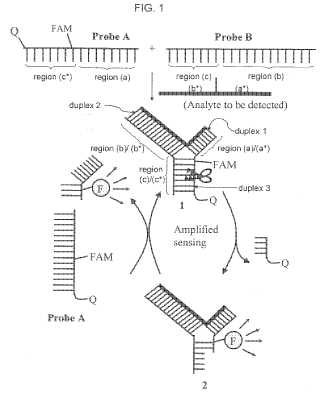Probes and Methods for Detecting Analytes
Embodiments disclosed herein relate generally to probes, methods, and kits for detecting the presence of a target analyte. The probe generally comprises two strands that have regions of complementarity and do not associate with each other at the reaction temperature. In the presence of an analyte, the two strands of the probe can hybridize to each other, and the analyte can hybridize to both strands of the probe in a juxtapose manner to form a tripartite structure (probe-analyte complex). If the region of complementarity between the two probe strands contain cognate restriction endonuclease (REN) sequences, then the formation of the tripartite structure will lead to the generation of a REN site that can be cleaved by a REN, and the cleavage can then be detected by a variety of methods to signal the presence of the analyte.Attached files:

Patents:
WO 2,010,017,246
Inventor(s): SINTIM HERMAN [US]
Type of Offer: Licensing
« More Biomedical Patents
